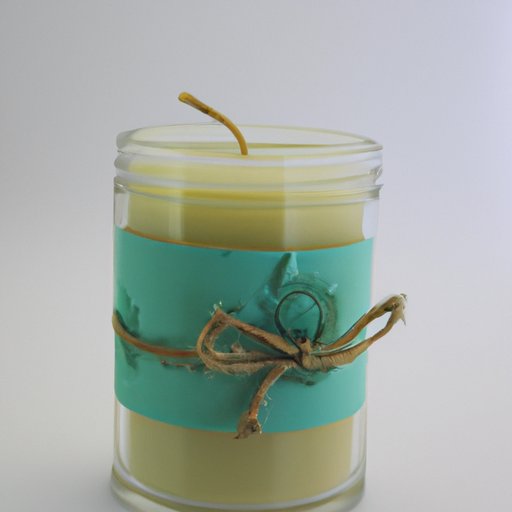Introduction
Candles have long been used throughout history for many purposes, from providing light in dark places to setting the mood for special occasions. In recent years, candles have become increasingly popular for their aesthetic appeal and ability to add a pleasant scent to any room. But with so many different types of candles available, it can be difficult to know which ones are safe for your health. This article will explore the different types of candles and their potential health risks, so you can make an informed decision when choosing the safest candle for your needs.

Discussing Natural Waxes and Their Benefits
When it comes to choosing a safe candle, one of the most important factors to consider is the type of wax used. Natural waxes such as beeswax, soy wax, and coconut wax are all considered to be safer options than synthetic waxes like paraffin. Natural waxes are made from renewable resources and are biodegradable, making them a more eco-friendly choice. They also produce less soot when burned, which helps to reduce air pollution.
In addition to being a more environmentally friendly option, natural waxes are also better for your health. Beeswax, for example, has been found to contain a number of compounds that may help to reduce inflammation and improve respiratory health. Soy wax is another popular choice for its ability to burn cleanly and slowly, releasing fewer toxins into the air.
Examining Candle Fragrances and Their Potential Health Risks
Fragrance is another important factor to consider when choosing a safe candle. Many commercial candles contain synthetic fragrances that can be toxic when inhaled. These fragrances contain chemicals that can cause irritation to the eyes, nose, and throat, as well as headaches and other symptoms. For this reason, it is best to avoid candles with artificial fragrances and opt for candles with natural essential oils instead.
Common candle fragrances include lavender, jasmine, lemon, and eucalyptus. While these fragrances are generally considered safe, some people may experience allergic reactions or sensitivity to certain scents. It is important to pay attention to how a particular fragrance makes you feel, and if you experience any adverse reactions, it is best to avoid that scent.

Comparing Soy and Paraffin Candles for Safety
Soy and paraffin candles are two of the most common types of candles available. Both have their advantages and disadvantages when it comes to safety. Soy candles are made from a renewable resource and are biodegradable, making them a more environmentally friendly option. However, they may produce more soot than paraffin candles due to their higher melting point.
Paraffin candles are made from petroleum byproducts and are not biodegradable. They also tend to produce more soot when burned than soy candles. On the plus side, they are often cheaper than soy candles and can provide a longer burning time. When choosing between soy and paraffin candles, it is important to consider the environmental impact, as well as the potential health risks associated with both.

Investigating Scented Candles and Their Possible Health Hazards
Scented candles are popular for their ability to fill a room with a pleasant aroma. Unfortunately, many of these candles contain artificial fragrances that can be toxic when inhaled. Common ingredients in scented candles include phthalates, which have been linked to hormone disruption and reproductive issues; benzene, a known carcinogen; and formaldehyde, which is a known irritant.
When burning scented candles, it is best to choose those made with natural essential oils rather than synthetic fragrances. Essential oils are derived from plants and are generally considered to be safe when used in moderation. Additionally, it is important to make sure that the wick of the candle is trimmed to the proper size before lighting, as this will help to reduce the amount of smoke and soot produced.
Conclusion
Choosing the right candle for your needs can be a difficult task. By understanding the different types of candles and their potential health risks, you can make an informed decision when selecting the safest candle for your home. Natural waxes such as beeswax and soy wax are generally considered to be safer than synthetic waxes like paraffin. Additionally, it is best to avoid candles with artificial fragrances and opt for those made with natural essential oils instead. Finally, it is important to make sure that the wick of the candle is trimmed to the proper size before lighting, as this will help to reduce the amount of smoke and soot produced.


